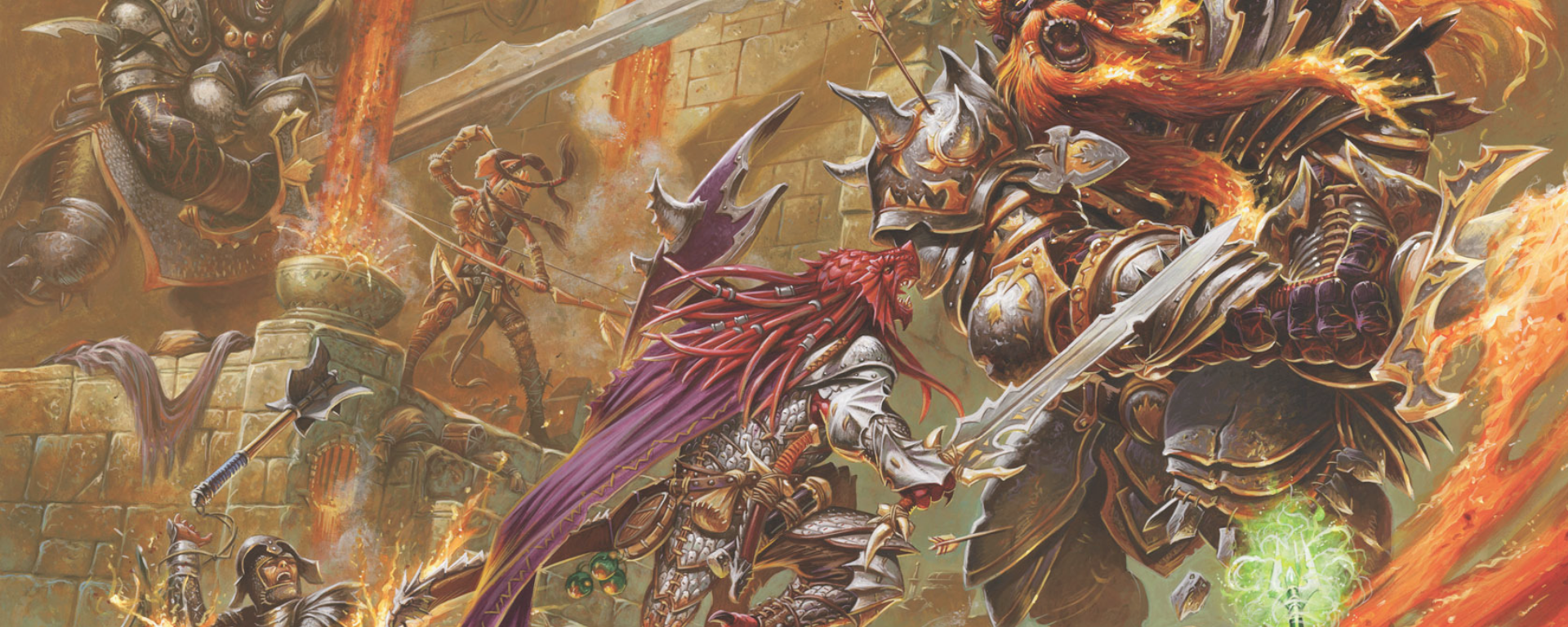Welcome to a blog about Dungeons and Dragons! For the people who want to start playing but aren’t really sure where to start, this blog also explains some of the basic questions you may have about Dungeons and Dragons, like how to create characters, how to fight, writing dungeons, and lots of other fun stuff!
Article by Sara Gann
*We are a participant in the Amazon Services LLC Associates Program, an affiliate advertising program designed to provide a means for us to earn fees by linking to Amazon.com and affiliated sites.
What Is Dungeons and Dragons?

Dungeons and Dragons is not the cliché it was when it first came out in the early 1970’s. It is no longer the game your weird cousin plays in the basement with his friends on Friday nights. This game is ever evolving and always fun, especially when you know what your doing. Dungeons and Dragons is a tabletop roleplaying game, that you can play so many different ways, it all just depends on your preference.
For Dungeons and Dragons, you should have a minimum of three people to play with. One of those people should be a Dungeon Master (DM). A Dungeon Master is the person that starts you on your adventure, controls all the non-player characters (NPC), and rolls for enemies when battling. Every DM has their own way of navigating you through the campaign, but the gameplay is still the same.
What You Need

To get started you will need a few things:
-
- Dice set (you can find these on Amazon or at a local game store. It should include a 4, 6, 8, 10, 12, 20, and 100 sided die)
- A whole lot of imagination!
In Dungeons and Dragons, you can be anything you want to be and do anything you want to do. So do it! If you want to be a boy-crazy halfling thief who steals things to impress the guy she likes, you can! If you want to be a hippy druid connected to all of nature, you can! That is part of the magic of Dungeons and Dragons.
The Character

Since this is the first blog post of many, I decided that for time and readability purposes to gloss over making a character. Why? Because making an in-depth character takes a lot of work and time. For this blog post, I will do a quick build of a character so I can explain how the game is played. Don’t worry, I will definitely explain how to make an awesome, kick-ass character, just not today.
My character’s name is Verna.
- She is a Halfling Rogue who was kidnapped from her home when she was a baby. Her parents were bards and the woman who she would come to know as her mother was a thief in a guild, who was unable to have children of her own. She taught Verna everything she knew about thieving and because of her small stature Verna was good at it.
- Because Verna is a Halfling Rogue, her ability scores will be ranked as such from highest to lowest: Dexterity, Intelligence, Charisma, Constitution, Wisdom, and Strength. To determine these scores, I would roll four six sided dice and record the sum of the highest three for all five ability scores. I know it’s a little confusing and there were a lot of numbers in that sentence.
- The next thing I would figure out is what my ability modifiers would be. In the Player’s Handbook, there is a table to help figure out what modifiers I need to add according to what I rolled.
So Verna’s ability scores (with modifiers) would be:
-
- Dexterity – 16 (+3)
-
- Intelligence – 14 (+2)
-
- Charisma – 13 (+1)
-
- Constitution – 13 (+1)
-
- Wisdom – 12 (+1)
- Strength – 11 (+0)

There are other scores I will have to factor in later, like racial scores and proficiency bonuses, but for now I will keep it simple. The next thing I would need to figure out would be my hit points. Hit points are determined by the characters hit die and constitution modifier. Hit die are determined by a character’s class, so since Verna is a rogue, she would use one eight sided dice. The highest number I can roll on an eight sided die is an eight, I would then just add my constitution modifier, so my total hit points would be nine.
Verna is a trained as a thief and fights dirty when she has to. She carries a small dagger that she was given after she snatched a satchel of gold and jewels from a nobleman. Verna is also proficient with weapons such as a short swords and bows. She wears very little armor because it makes her feel less stealthy.
Every character starts out with a small amount of gold, armor, and certain weapons depending on what kind of character that is created. These items help determine how a character moves and what advantages or disadvantages they have. This also helps determine what a character’s armor class. For a first level character that wears no armor, the armor class would be 10 plus the character’s dexterity modifier. So Verna’s armor class would be 10 + 3, or 13. Armor class can be found in the Player’s Handbook along with all the other equipment a character needs.
Gameplay

Since I have my character, equipment, hit points, and armor class all figured out, I can now start an adventure. WOOT! FINALLY!
The Dungeon Master sets the stage for all the players. As I enter into a small quiet town, I see a merchant headed for me. He asks if I need anything. I say I’m looking for work. He points me in the direction of a tavern called The Swinging Noose. I make my way to the tavern and see the town has a set of gallows which is not unusual, until I see the name of the town.
- You’re now entering Hangman’s Hollow, a sign reads. There is a statue of an executioner closer to the tavern.
- I enter the tavern and ask the bartender about work and he asks what I can do. I can tell he’s not taking me seriously because of how small I am, but I keep a stoic face and ask again. He finally gives in and points to a table near the back of the building where three people sit.
- I approach the table and notice an ugly half-orc and an elf sitting across from a small human man. They look at me with suspicion, but I tell them I am looking for work and that no matter what the job is you’re ready. They offer me a seat and the small man begins to tell the group of a small fortune in a supposed haunted house. He says that his nephew went into the house and never returned. The group decides to take on the adventure, and they rest for the night and decide to meet at the house in the morning.

- As the DM is setting the scene, the people playing with you in this campaign can ask questions about the upcoming adventure. Someone may have skills that can help decipher different language or knowledge about the history of the town or house before you ever go in. Let’s fast forward for some combat.
- The group has entered the house and the group moves slowly. The elf, whose name is Adrie, is more interested in looking through the books than anything else. The half-orc, Holg, stumbles around clumsily and before anyone knows it he activates a trap. Everyone stops and three skeletons appear in the foyer of the old house.
- Now, normally my character could’ve rolled to see if there were any traps nearby, but that’s not fun. I want to fight stuff!

- So at this point, your group would roll for initiative. This just determines who will attack first. Everyone will roll their 20 sided die and whoever has the highest will attack. This is when armor class and hit points come into the game.
- Skeletons have a 13 armor class and 13 hit points, but players do not know this information. The DM keeps this information to himself.
- The group has all rolled for initiative, and my character gets to attack first. So I roll my d20 and it lands on 15. So this means I hit the skeleton since I rolled higher than his armor class.
- I pull back on my bow and let loose an arrow, striking the skeleton.
- Since I used my bow as my weapon of choice, I have a different dice to use to estimate the damage I’ve done. While using a short bow, the damage inflicted would be determined by one six sided dice. I roll a two, which brings the skeletons hit points down to 11. This will continue through the other people in your group and the DM will play for the skeletons.
- When all the skeletons are dead, the group may proceed with the adventure and collect the experience points.

So gather your tribe, and gain that experience!
Featured image credit: dnd.wizards.com


This is such a fun post! DnD can be so overwhelming and it’s nice to see it broken down into something that’s readable and relatable. My groups is on a hiatus at the moment but I can’t wait to get back to playing my gnome druid, Allywick!
LikeLike
This was a really good post, and very useful for folks interested in getting specifically into DnD. I am looking forward to future posts.
LikeLike
This is so easy to understand, perfect for any newbie player.
LikeLike